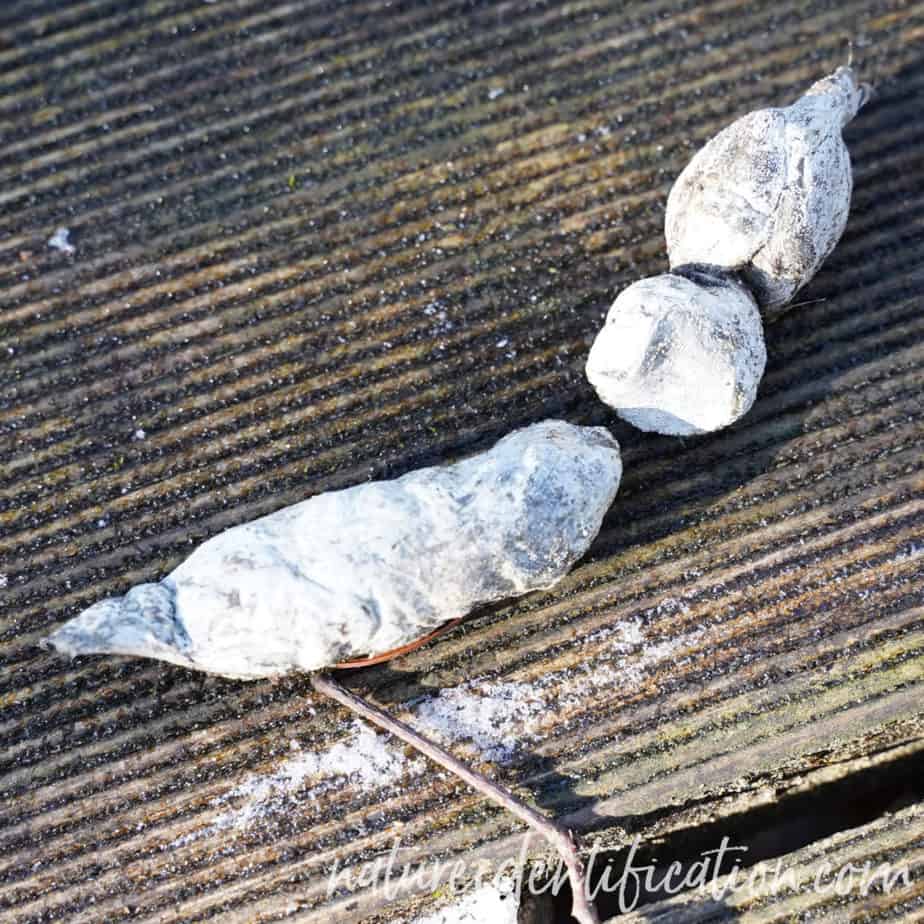There are several very different reasons why a scat (animal poop) may appear white. The truth is that there are many animals that make white scats making the sign a common occurrence. Birds, reptiles, and mammals can all produce white scats and we will discuss the differences in this article.
Mammals

Discovering a white scat out in the woods is a normal discovery, especially in the spring in temperate regions where a large collection of scat that accumulated in the snow is then deposited as the snow melts onto trails, fields, and other areas you may be exploring. These scats may look normal at first, but come April and May, these scats will have aged, and some will have turned white!
White mammal scat is almost always associated with a really old scat. Unless the animal has a digestive disorder, and is not producing the right enzymes, we can be confident that we are looking at an old scat. Bobcats, mountain lions, wolves, coyotes, foxes, and even dogs all produce scats that age white.
Dry and chalky white scat is caused by brown organic material being washed away from snow melt or rain. What remains are hair, calcium powder, and bone fragments from the decay of bones. In addition to the white calcium, the hair from the prey that the predator ate may become sun-bleached further adding to its white appearance. The combination of all these factors contribute to the degree of whiteness observed in the scat.
Bird and Reptiles

Unlike humans, birds and reptiles don’t pee! Instead, their nitrogen waste is released alongside organic waste in the form of uric acid. The nitrogen within the uric acid provides the scat with the white color. The scat may appear as a tubular-shaped scat with a white tip (brown/gray organic matter tipped by uric acid) which is seen in reptiles and many birds, or in the case of predatory and ocean-dwelling birds, their scats can appear as a big white mess or splatter. This is called a uric splat.
The next time you see a big white splatter on the ground, alongside a perch, or thoughtfully placed on your car – you are likely looking at the work of a bird!
Mold

If the scat looks fuzzy, it may be that what you found is scat with a white mold on its surface. The spores from the mold are what give the scats that “fuzzy” appearance and different mold species will express different colors. Mold will grow on scats that still have a lot of moisture and organic material rather than a dried out scat.
In summary, white scat is not unique to one species or for any one reason. You will need to look for other clues to identify which animal made the scat!
